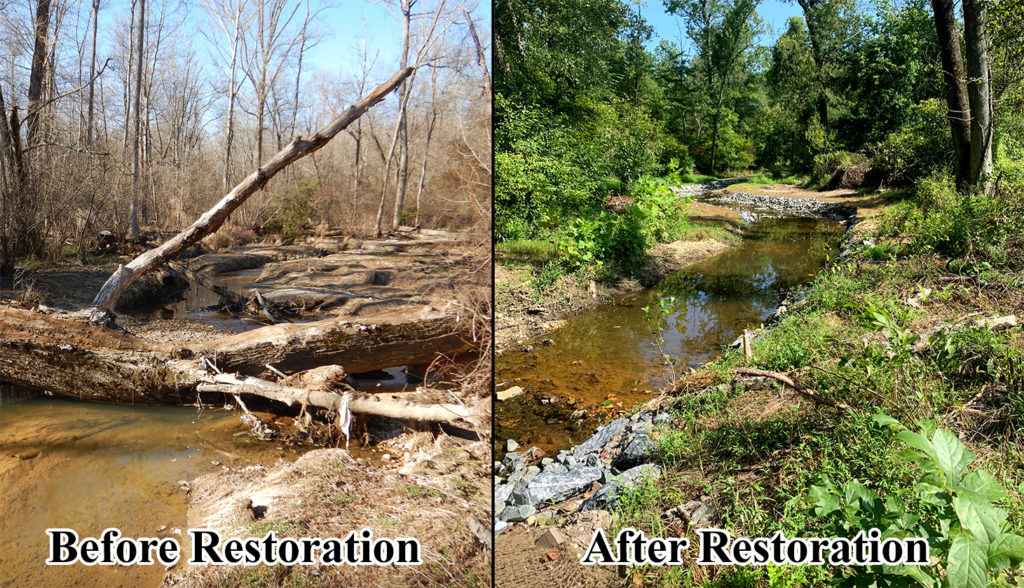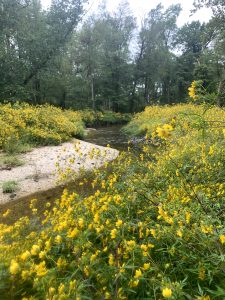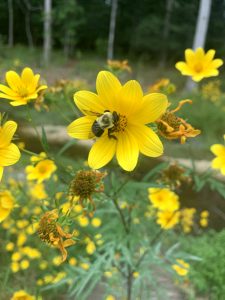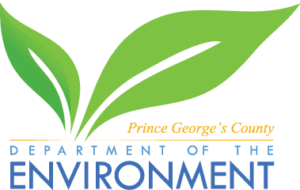GreenVest, LLC and Petro Design Build Group, under the GV-Petro Joint Venture, LLC, recently completed construction of the Tinkers Creek Stream Restoration Project. The Project is a full-delivery solution for the Prince George’s County Department of the Environment (DOE) to comply with their total maximum daily load (TMDL) and Impervious Acres Treated requirements as part of their Municipal Separate Storm Sewer (MS4) Permit obligations. At 40,662 linear feet, the Tinkers Creek Stream Restoration Project is one of the largest stream restoration projects ever completed in Maryland and is located on both public and private property in Clinton and Temple Hills, Prince George’s County.

The stream restoration included Paynes Branch, Meetinghouse Branch, Tinkers Creek, and their headwater tributaries. These streams were historically straightened to accommodate sewer main infrastructure. Over time, these straightened and unstable streams eroded severely, as they attempted to reach a more stable, meandering state. An increase in impervious surfaces and associated stormwater runoff from continued development in the watershed further accelerated this erosion. In its attempts to reach a stable geometry, the streams ate away at public and private property, threatened infrastructure, and delivered large volumes of pollutants to the Piscataway Creek and ultimately, Chesapeake Bay watersheds.

To complete this large-scale stream restoration project, GreenVest tailored its design to address the streams’ specific impairments. The restoration approach included realigning the stream and stabilizing the stream bed and banks with wood and stone structures. The interlocked, fibrous root system of wood toe structures provide excellent shelter and foraging areas for fish, amphibians, and macroinvertebrates. The general water quality uplift provided by the Project has greatly improved aquatic habitat within the streams. Headwater tributaries originating from stormwater outfalls were also rehabilitated to reduce erosion and provide a stable conveyance to the major stream channels. Trees and shrubs were planted within the stream buffer to increase water quality and habitat benefits.

The Tinkers Creek Stream Restoration Project commenced construction on November 19, 2019, and was completed in just under two years, on September 15, 2021. Where possible, the impact of construction was reduced to both promote habitat and decrease waste and the impact of construction on the stream corridor. Trees cleared for access were utilized in wood stream structures, mulch grindings were utilized for the access road to protect critical root zones, and excess woody debris were incorporated into the floodplain as log sills or habitat piles. Upon completion, the project was planted with native tree and shrub species and seeded with native riparian and wetland seed.
The next phase of the Project is the 5-year maintenance and monitoring period, where GreenVest will ensure the restoration remains stable. At the conclusion of 5 years, GreenVest will release responsibility for the project over to DOE for perpetual maintenance and monitoring. The Tinkers Creek Stream Restoration was delivered ahead of schedule and is an excellent example of a full-delivery approach to watershed-scale stream restoration, problem solving, community engagement, environmental stewardship, and Chesapeake Bay Protection. We look forward to providing more updates in the future!




